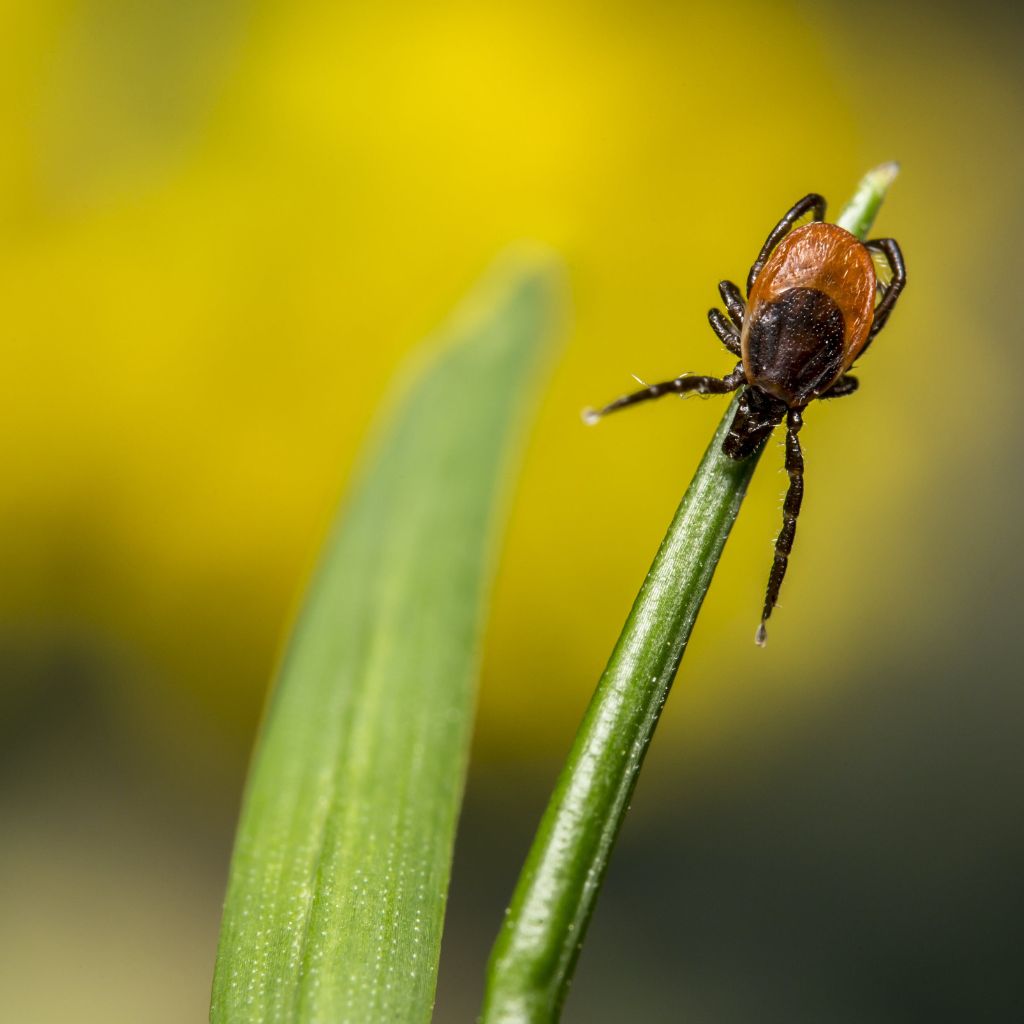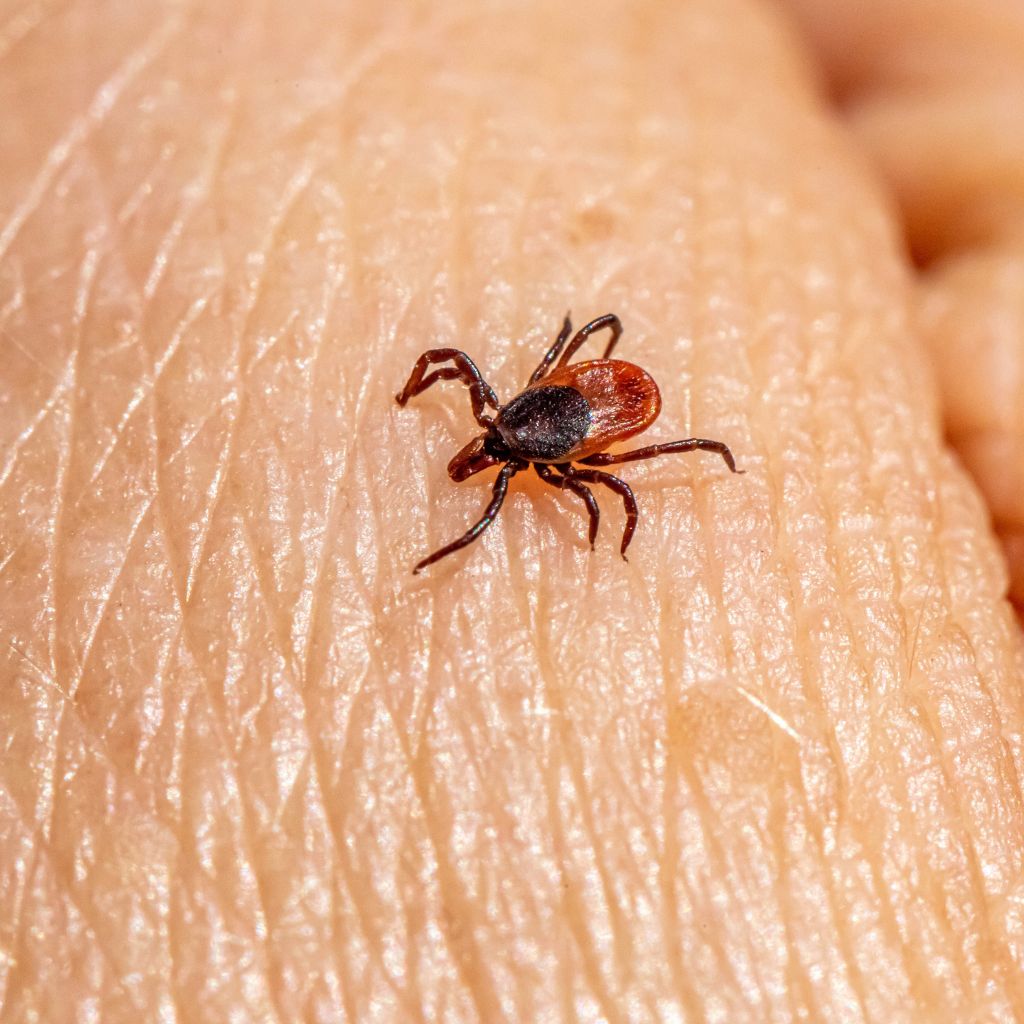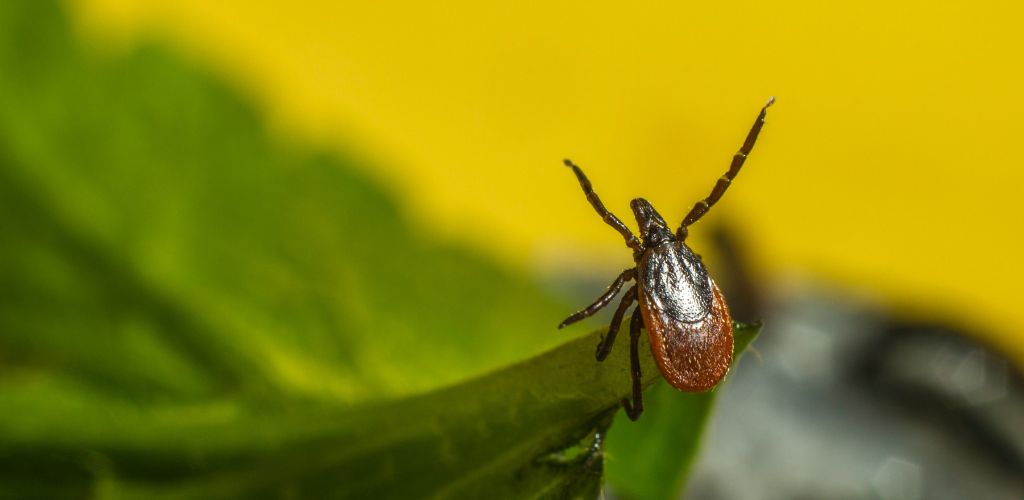If you’re like me, you love the thrill of mountain biking through nature. However, an unwelcome part of that nature can be ticks.
These little critters not only cause irritation but can also be carriers of diseases like Lyme disease.
Understanding their habitats and behaviors is key to avoiding them.
Ticks thrive in wooded and grassy areas, the very places we love to bike. They don’t jump or fly; instead, they use a method called questing. They hold onto leaves and grass by their lower legs and reach their upper legs out to grasp onto you as you pass by.
Firstly, be aware of the seasons when ticks are most active. In many regions, this is typically from spring through fall. Warmer weather brings them out in droves. Also, be aware of your local area’s tick population and types of ticks. Knowing what you’re up against can help you prepare better.

Protective Clothing and Gear
Now, let’s talk gear. The right clothing can be a game-changer in preventing tick bites.
When you’re out on the trails, wear long sleeves and long pants if you can. Yes, I know it can get hot, but there are breathable, lightweight options out there that won’t cook you.
You can even go so far as to tuck your pants into your socks or wear bike gaiters. It might not be the height of fashion, but it’s effective in keeping ticks from crawling up your legs.
Color matters too. Opt for lighter-colored clothing. Ticks are easier to spot against a light background, giving you a chance to brush them off before they latch onto you.
Also, invest in a good quality bug repellent. Products containing DEET, picaridin, or lemon eucalyptus oil can be effective. Apply it not just on your skin but on your clothes too.
Obviously if you’re usually riding in a short sleeve top and shorts, as many of do, you’re going to need to use a bunch of that bug repellent I mentioned all over your arms and legs. You don’t want those disgusting little ticks grabbing onto you, and scuttling quietly up your shorts, or into your armpits to latch on…. shudder.
Don’t forget about your gear. Use permethrin, a tick repellent, on your biking gear. This includes your bike shoes, backpack, and even your bike gloves. Permethrin-treated clothing is also available and can be a great investment for regular riders.

Pre-Ride and On-Trail Strategies
Before you hit the trail, do a quick recce of the area.
Stick to well-used trails as much as possible. Ticks are less likely to be found in areas with high foot or bike traffic and more likely to be in overgrown, brushy areas.
Avoid bushwhacking or taking shortcuts through long grasses or shrubs. I know exploring off-path can be tempting, but it increases your risk significantly.
On the trail, be mindful of where you take breaks.
Avoid sitting directly on the ground, in leaf litter, or on fallen logs – common tick hangouts.
If you need a break, try to find a rock or a cleared area. Also, if you’re riding in a group, periodically check each other for ticks, especially in areas like the back of your neck, under your arms, and around your waist. Don’t be shy, it’s for everyone’s good! 😀

Post-Ride Tick Checks and Showering
Alright, you’ve had your fun, and now it’s time to be thorough.
Once your ride is over, do a detailed tick check. This is best done immediately and again a few hours later.
Check your entire body, including underarms, in and around ears, inside belly button, behind knees, between legs, around the waist, and especially in your hair.
Having a buddy to help with this can make it easier. And if it’s your significant other, who you’re happy to get naked in front of, then all the better to hunt for pesky ticks!
Shower as soon as possible after your ride.
This isn’t just about washing off the sweat and dirt; a shower can help wash off unattached ticks and is a good opportunity for a thorough tick check.
Pay special attention to your gear too. Ticks can hitch a ride on your equipment and clothing. Put your clothes in the dryer on high heat for about 10 minutes to kill any ticks.
Lastly, keep an eye on your health post-ride. If you develop a rash or fever within several weeks of a tick bite, see your doctor. Mention the tick bite, where you were biking, and any symptoms you’re experiencing.
So there you have it, my fellow trail shredder! By understanding tick habitats, wearing the right gear, being strategic on the trail, and performing thorough post-ride checks, you can significantly reduce your risk of tick bites.
Stay safe out there, and see you on the trail!

